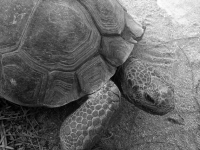Part II–Transition Joshua Tree Permaculture Meeting

II. Permaculture
Wrapped in a fragile shell and filled with essential energy, the theory of permaculture a hard topic for me to write about because it is one of my yolks of hope and I want to do it justice when writing about it.
Permaculture is a term that is being batted about like a kitten does with one of those fluffy toys on a string. Especially in the arts, I have overheard people toss the term out when they really don’t have any idea what it is, but use it to hang ten surfing the green wave of cultural capital. Each casual misuse of the term seems to dilute it, squeezing out its potency until it becomes empty like the word “sustainability” or the “environment” and fills the vial of some sort of expensive elixir you can get hits of at Whole Foods. To quote pattern designer Toby Hemenway, someone who has done much more than skimmed a Wikipedia article on the subject, “Permaculture is not the movement of sustainability and it is not the philosophy behind it; it is the problem-solving approach the movement and the philosophy can use to meet their goals and design a world in which human needs are met while enhancing the health of this miraculous planet that supports us.”
To flatten any pedestals I may be putting permaculture designers on, I should be clear that I get equally discouraged when the language of capitalism is reproduced by permaculture designers. Phrases that rationalize the importance ecology within capitalist terms—like “investing energy”, “increasing resources and productivity”, describing the roles of flora and fauna in an ecosystem as “professions”, describing soil like a “bank account” that you “withdraw” from, and most importantly attempting to create “infinite growth” while ignoring the importance of decomposition—only further ingrain the doctrine of exploitation that capitalism disguises as freedom.
I was first introduced to permaculture when I met Connie Van Dyke, a woman in her 50s who grows 70% of her food in her tiny yard in Portland, Oregon. In 2011, I took a permaculture design course. I often describe permaculture to people by saying, “It is a set of design principles that can be used to design ecosystems where humans can cohabitate with other species. It was originally based on the practices of indigenous peoples and was used in the 1970s to design homesteading sites, but has since expanded beyond growing food and living off grid. Permaculture principles can be used to design a relationship, a cooperative, an organization, an event, a space, a movement, an action, etc.”
Katherine Ball was in residence as our HDTS Scout in Spring 2014.
The HDTS Scout Residency is dedicated to learning more about the people and places that make up our diverse and ever evolving community.
Originally from Detroit, Michigan, Katherine has worked on projects around the world, exploring alternatives to the dominant discourse. Some of these include: bicycling across the US to interview Americans working on small-scale solutions to the climate crisis, coordinating a national day of action to halt business at banks and corporations unduly influencing state laws, living in an off-grid floating island building mushroom filters to clean a polluted lake, and studying the behaviors of various species acting as the ecological counterpart to civil disobedience. An amateur in the best sense of the word, Katherine strives to give more energy to our dreams than our fears.
During her residency, Katherine engaged in a series of in-depth interviews and conversations with high desert residents, focusing on our human impact on the desert landscape. Her book represents a condensed version of those discussions, encompassing water conservation, big solar, wildlife linkages, and asks: what is a sustainable life in the desert?










